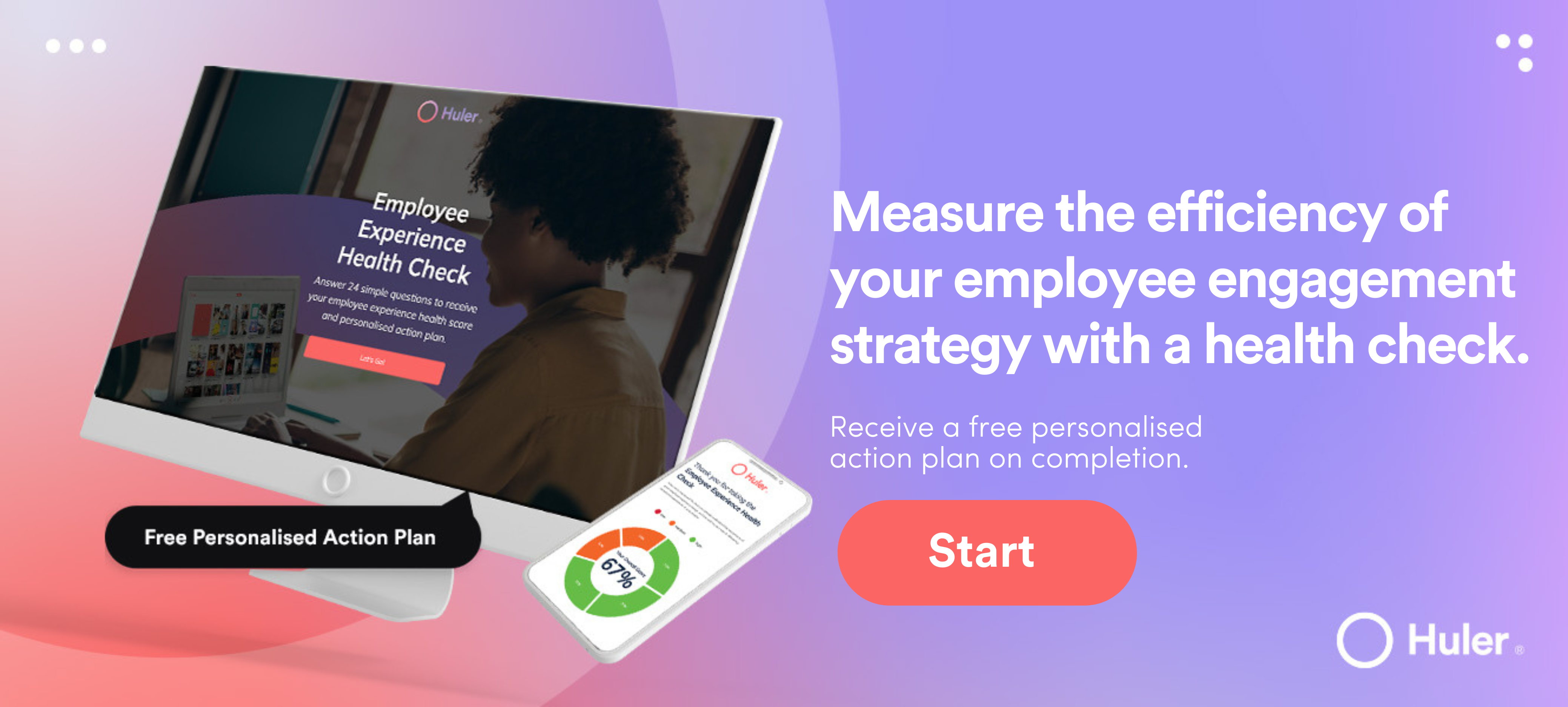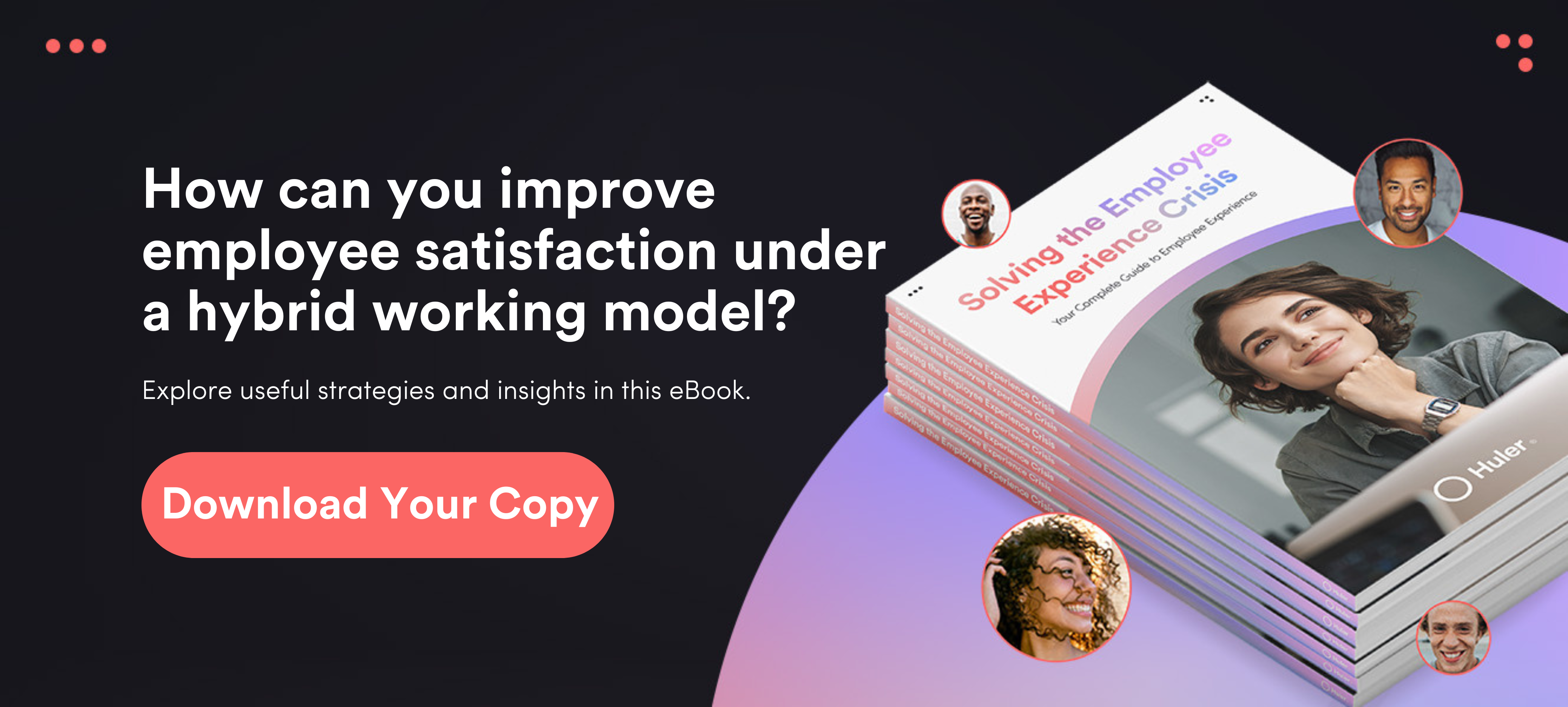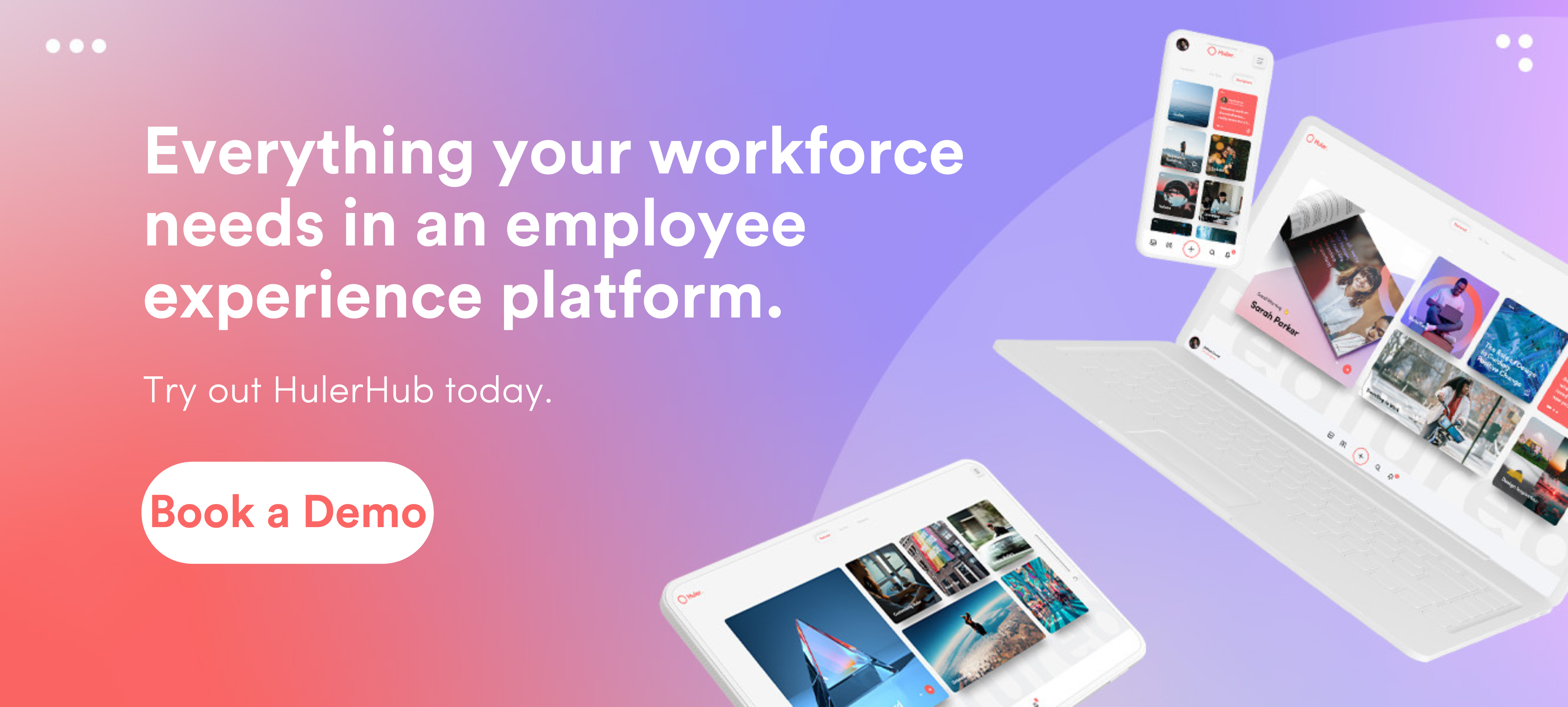Keeping employees engaged is more important than ever. Why? Because for all the benefits hybrid and remote working offers, if businesses don’t create a people-first culture, employees risk feeling lonely or disconnected from the rest of their team.
According to a 2020 report by Gallup, 13% of US employees are actively disengaged from their work, and 51% feel “psychologically unattached” from their company.¹ This means that employees often feel unsure of their place in an organisation and have no incentive to remain loyal to their job. Another Gallup study of over 20,000 US businesses found that those with the lowest engagement scores experienced an average of 31% — 51% more employee turnover than those with the highest results.²
But forging a people-first culture where all workers — regardless of where they are based — feel comfortable and supported, you can not only reduce churn but begin to instil a sense of loyalty that will attract more top talent to your organisation.
In this blog post, we offer advice on how to do just that…
Employee experience and engagement
Employee experience is defined as the entire journey that an employee takes with your company. This includes pre-hire interactions through to exit interviews (and even post-exit feedback) and everything in between. There’s a long list of contributing factors to positive employee experiences, but to name a few:
- Tools and resources available.
- A sense of purpose and belonging.
- Opportunities to develop.
Employee engagement is the connection your staff has to the work they perform. This makes engagement a key element of employee experience.
By recognising that employee experience is intrinsically linked to employee engagement and that the two frequently overlap, you can start to form a plan that will help you increase productivity and enhance your reputation.
Suggested Reading: For more about experience and engagement, check out our blog on — Employee Engagement vs Employee Experience.
Build a people-first culture
Building a people-first culture is about taking care of your employees and putting their needs first — always. Your employees shape company culture, bringing vibrancy and life to your business. To build a people-first culture, consider:
- Offering flexible work options: Hybrid and remote working is going nowhere. It wasn’t a passing pandemic fad; it helps people take control over their work-life balance. Prioritising this is integral to employee satisfaction. Whether it’s cutting down on the commute or better juggling work with family, many employees find a hybrid working style works for them. Listen to your employees, and give them the flexibility they need to be better engaged.
- Providing wellbeing initiatives: According to one study, in 2020-21 50% of all work-related ill health was linked to anxiety or depression.³ Companies need to actively promote mental health and wellbeing. Listen to employees by giving them frequent and varied ways of providing feedback. Encourage a good work-life balance. Promote positive working relationships. By promoting wellbeing, employees will feel supported by your company. This can lead to greater staff retention and less time spent hiring and training new staff.
- Focusing on a sense of belonging: if people feel part of a team, they’re more likely to stay than those who don’t. This doesn’t necessarily mean increasing pay or offering perks — it can be something as simple as improving internal communications or implementing one of their suggestions in the day-to-day running of the business.
Building a people-first culture with those working away from the office can be tricky without the right tools. Modern intranets and employee experience platforms provide a solution, enabling employees not just to get their work done as easily but also to help them feel connected to their work and colleagues. This helps their levels of engagement — and retention.
Feedback and recognition
Imagine you have a problem at work but there’s no real way to raise it. Or you’ve gone above and beyond and haven’t received so much as a thank you. What might that do to your sense of engagement?
It’s no surprise that employees want to feel that they are being heard and recognised. But building employee engagement goes beyond simply acknowledging the efforts of employees every once in a while. It means frequent interaction and encouragement of individuals and teams.
Make recognition easy
But it’s not just about getting recognition from managers. Peer recognition is just as — or perhaps more — important.
One way you can promote recognition is through a dedicated employee recognition feature within a modern intranet. Imagine you have a team that’s based in the UK, but you also have a team member based in France. Not only might English not be their first language but they’re also physically distanced from everyone else. An employee recognition feature helps your team to recognise each other’s efforts and build a bond that transcends languages, time zones and cultures.
This way, employees not just feel connected with their colleagues, but also feel valued by them. And feeling valued is a big factor in forging good employee engagement.
Prioritise feedback
Bringing it back to your relationship-building as a manager for a second, we need to talk about a scary word: feedback.
Sometimes, the first time employers hear employee feedback is during their exit interview. And by that point, it’s too late. They’ve already decided to leave, and you’re being dragged deeper into the cycle of employee churn.
You need to give employees the chance to provide feedback during their time at your company. Not only will this give you opportunities to improve, but it will also show you value the opinions of your team members.
You can gather feedback through:
- Anonymous surveys.
- 1:1 sessions.
- Weekly drop-ins.
- Employee recognition features in experience platforms.
A 2016 ILM survey found that 25% of people gearing up to leave their jobs were doing so because they felt unappreciated at work — and this was pre-pandemic.⁴ All this to say: look after your employees, and they’ll be more likely to stick around.
Learning and development
An integral part of engaging employees is providing great learning and development opportunities. However, L&D has to be tailored to the individual.
If there’s one thing we’ve learned from remote working, it’s that not everyone is productive under the same conditions. And in the same way, learning resources aren’t one-size-fits-all. Random or generic resources flung onto a digital workplace will disengage employees that need resources tailored to their needs — if they’re able to find the resources at all.
After all, 77% of L&D professionals believe that personalised learning is integral to making employees feel engaged and motivated.⁵ So keeping employees happy and improving their job satisfaction relies on training them the right way.
And as employees use these resources to reskill, upskill and develop, not only does their benefit their engagement, it decreases your churn: rather than move elsewhere, they can move to other jobs within your company.
Onboarding
Onboarding is where employee experience begins. It’s your company’s first impression, so a good one is vital. It also sets the foundation of skills and knowledge your employee needs to perform their role to a high standard. To offer an engaging and successful onboarding programme, your human resources team can:
- Create onboarding resources: Create resources and make them easily accessible in the digital workplace, where all essential information can be found easily.
- Be welcoming: Provide structure for their first week by setting up welcome meetings with key figures in the company, as well as colleagues. These introductions will help instil a sense of belonging and establish the experience they will get in the long term.
- Outline their roles and responsibilities: This means sitting down with your new hire and talking through the job description, plus how you might see their role expanding in the future.
- Be contactable: Ensure your office door (virtual or otherwise) is always open. New starters will want to know that they can ask questions, and who to go to for answers. Don’t just leave them to get on with it. Be supportive, and your employee will quickly become a positive asset. Hybrid and remote workers will appreciate your input here, as it will ensure a stable, engaging experience from the outset.
According to Enboarder, 86% of new hires decide how long they plan to stay in a company within the first six months.⁶ Create a great onboarding experience = reduced churn.
How to keep remote employees engaged
Because you don’t see hybrid or remote workers in person every day, some companies don’t engage with them as thoroughly as those in the office. This can make them feel disengaged and distanced from their colleagues.
This makes a modern intranet or employee experience vital. This is where they work. It needs to include all the information and resources for them to do their job, and everything around specific tasks, including company information, announcements and news. Just like in the office.
With a modern intranet like this, your company can create a reliable experience that successfully bridges the digital and physical workspace.
Imagine organising an away day for the whole company. If there’s a disconnect between your office and hybrid/remote workers, the separation will be obvious. However, if your remote employees have been included in the day-to-day functioning of the company, bringing everyone together will feel natural.
Building a better workplace
Done right, reduced churn is a positive byproduct of investment in engagement. Take care of the engagement and the retention will take care of itself. This can lead to another positive byproduct: if people are not just engaged at work, but enthusiastic too, this can help improve your status as an employer and help attract talent to your company too.
Investing in a modern intranet that is prioritised in producing a great employee experience is the way to do this, particularly if you have remote and hybrid staff on your payroll.
HulerHub is a modern intranet that allows you to centralise everything your workforce needs in one easy-to-use, customisable hub. Users can:
- Use and create collections to gain and share knowledge, for example during employee onboarding.
- Receive company-wide announcements — and collate them together.
- Work from anywhere with full mobile integration.
- Recognise a peer through the employee recognition feature.
By streamlining knowledge-sharing processes through simple, visual tiles that allow you to link all your documents, tools and systems, HulerHub can transform your business by engaging and empowering your employees towards a brighter, more productive future.
See how HulerHub can help you and book a demo today.
¹ U.S. Employee Engagement Reverts Back to Pre-COVID-19 Levels | Gallup
² How Employee Engagement Drives Growth | Gallup
³ Work-related stress, anxiety or depression statistics in Great Britain, 2021 | HSE
⁴ Reduce Churn by Engaging Employees from the Moment They Are Hired | QuestBack
⁵ 5 Stats Proving the Value of Personalised Learning | eLearning Industry
⁶ How to Radically Improve Your Onboarding Process with the People Activation Model | Enboarder







